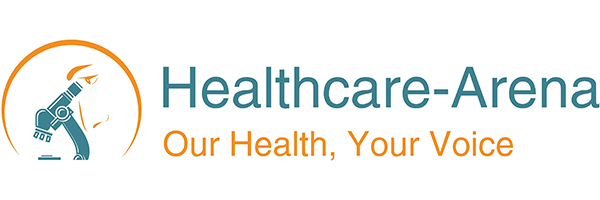Once upon a time, people used to go courting. Indeed, songs have been written upon the subject (see Seven Brides for Seven Brothers…). Things moved at a much slower pace in the ‘marital relationship’ department – to the extent that in essence, one had actually be married in order to even know what the term meant. Today, the requirement to woo has been largely replaced by the requirement that you have a mobile phone, an appropriate geosocial networking (GSN) app, and the willingness to get to know someone in the biblical sense in a very short space of time.
While this may represent cultural progress, and has undoubtedly enriched the lives of many, such apps (for example, Grind’r or Tinder), which largely allow quickly and easily arranged anonymous encounters, may be contributing to a rise in serious sexually transmitted infections (STIs).
A 2014 US study [1] of HIV negative men who have sex with men (MSM) and use GSN applications to meet sexual partners, showed that:
- They were at greater risk for gonorrhoea and Chlamydia than those who meet in-person or on the internet
- They were 25% more likely to be infected with gonorrhoea and 37% more likely to be infected with Chlamydia
- There was no difference in their likelihood of infection with either HIV or syphilis
Participants were drawn from those using an STI clinic so of course, the results are not fully representative.
A similar trend was found in New Zealand in 2012 [2], particularly amongst young men, although numbers were far too small to identify a true trend. The Rhode Island Department of Health (HEALTH) report of 2014 also suggests high risk behaviours (including the use of social media to arrange meetings) are responsible for an increase in STIs [3].
It would appear that a similar trend is occurring in the UK in terms of STI rates. Public Health England’s 2014 STI report [4] for 2013-2014 showed:
- The largest proportional increase in diagnoses were reported for syphilis (33%) and gonorrhoea (19%)
- Chlamydia was the most common infection
- Gay men accounted for 81% of syphilis and 63% of gonorrhoea cases – gonorrhoea diagnoses rose 26% in this group, nearly double the national rate
- Large increases in STI diagnoses were seen in MSM, including a 46% increase in syphilis and a 32% increase in gonorrhoea
- Among heterosexuals, young people (15 to 24 years) experienced the highest STI rates: 63% of Chlamydia cases, 54% of genital warts, 42% of genital herpes and 56% of gonorrhoea
However, is it disingenuous to blame a phone app? While these facilitate the sexual encounter, it is still up to the participants in that encounter to practice safe sex and not be complacent. In the early days of HIV in the UK, the safe sex message was taken very seriously, as evidenced by a fall in gonorrhoea rates. However, as treatments improved, post-exposure prophylaxis became available, and being HIV positive was no longer (for most) an immediate death sentence, behaviours again became risky, with a subsequent increase in gonorrhoea rates. The 1990 – 2010 European Surveillance Report [5] (ECDC 2012), found that gonorrhoea was reported three times more often in men than in women, with more than a quarter of all cases (26%) reported in MSM. Half of the syphilis cases were reported by MSM.
Clearly, the largest problem area is MSM, but young people the age of 25 are also at risk [4]. As ever, advice on safe sex is important. While some app owners are sending such messages and advice on their sites, a whole systems approach is required. In a bold move, new apps are being developed which include health information and forums for advice and support, along with the dating function.
Health care professionals need to be aware of the at risk groups and advise accordingly.
If you would like to comment on any of the issues raised by this article, particularly from your own experience or insight, Healthcare-Arena would welcome your views.
References
- Beymer MR, Weiss RE, Bolan RK, Rudy et, et al. Sex On-Demand: Geosocial Networking Phone Apps and Risk of Sexually Transmitted Infections among a Cross-Sectional Sample of Men who have Sex with Men in Los Angeles County. Sex Transm Infect. 2014. 90; 7:567–572 http://www.ncbi.nlm.nih.gov/pmc/articles/PMC4198579/ Accessed August 2015
- Stylianou G. Phone app link to gay syphilis epidemic. The Press. 25th Aug 2012. http://www.stuff.co.nz/the-press/news/7545452/Phone-app-link-to-gay-syphilis-epidemic Accessed August 2015
- Rhode Island Department of Health (HEALTH). HEALTH Releases New Data on Infectious Syphilis, Gonorrhea, and HIV. 22nd June 2015. http://www.ri.gov/press/view/24889 Accessed August 2015
- Public Health England. Infection report: HIV-STIs. 9; 22. https://www.gov.uk/government/uploads/system/uploads/attachment_data/file/437433/hpr2215_STI_NCSP_v6.pdf Accessed August 2015
- European Centre for Disease Prevention and Control. Sexually transmitted infections in Europe 1990–2010. EDCD. 2012. http://ecdc.europa.eu/en/publications/Publications/201206-Sexually-Transmitted-Infections-Europe-2010.pdf Accessed August 2015









